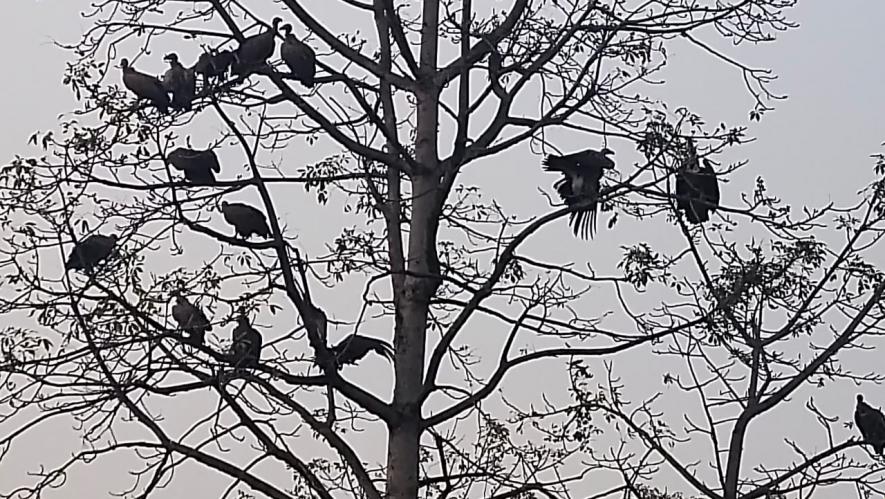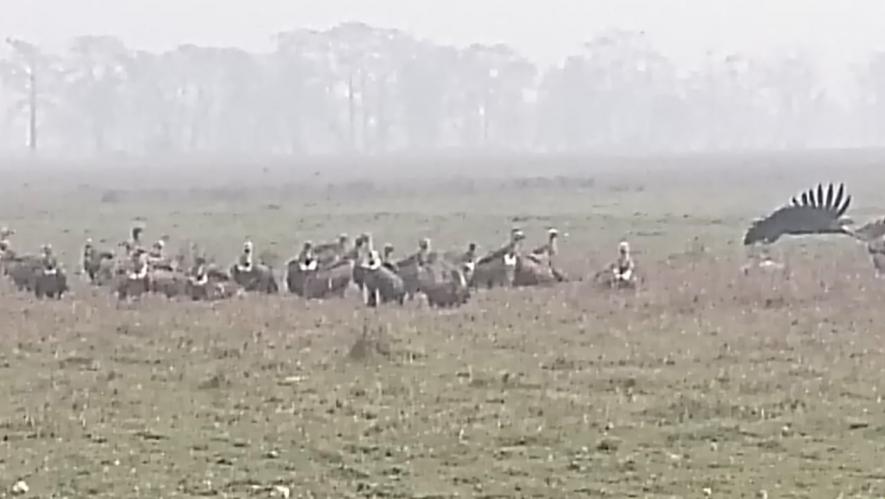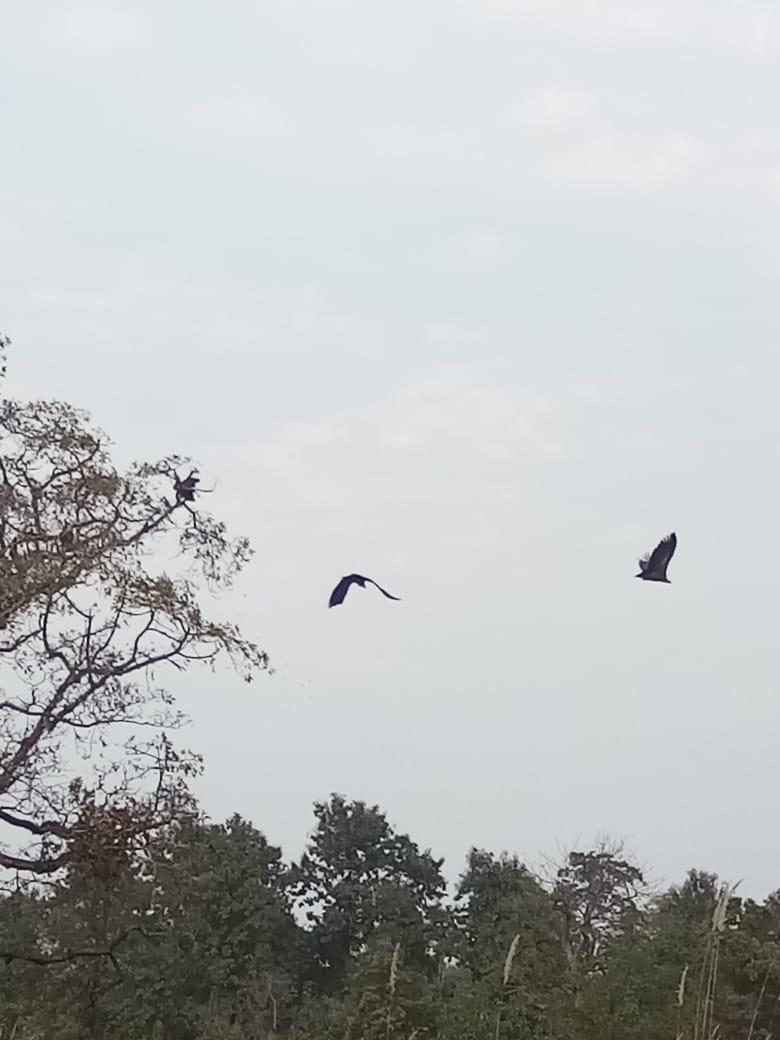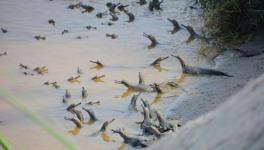Increasing Vulture Population Bodes Good News for Katarniaghat Wildlife Sanctuary in UP’s Bahraich

Bichiya, Bahriach: On a boat ride to the outer banks of the Gerua river which flows from Nepal and crosses the Bahraich district of Uttar Pradesh, last Sunday (January 17), a wonderful sight greeted us – a flock of vultures feasting on a carcass.
The view immediately brought a smile on the faces of the forest rangers and guards accompanying us on the ride inside the Katarniaghat Wildlife Sanctuary. On being asked about the reason behind their happiness, one of the forest guards said, “Our river is very clean and the water is crystal clear. This has happened because we have done a lot to protect the dolphins and gharials. Now that the vultures are here, whose numbers were dwindling just a few years back, our jungle will remain even cleaner as they will clear the animal carcasses.”
According to divisional forest officer Yashwant Singh, the number of vultures has increased within the sanctuary. He added that the count has increased from 35 last year to 159 now in the area. “Not only that, the native Himalayan vulture, which had been a rare sighting, has also been spotted. The current number of vultures in Motipur range are 25, in Kakraha are 16, in Katarniaghat it is 10 while in Sujauli it is 108. Further, the white, black and also the indigenous vulture have also been spotted,” he told NewsClick.
Also read: India Finally Re-introduces Critically Endangered Vultures into the Wild
Vultures are critically endangered species of birds and India has witnessed a steep decline in its population since the 1990s. By 2007, there was a decline of about 99% in three Gypsy species of vultures in the country. Although the population stabilised in 2011, it was very low. In the year 2015, it came to the notice of the wildlife board that while the white-backed vulture population was stable, the long-billed vultures were still declining.

Ram Kumar, a forest ranger looking after the protected area, told NewsClick that these vultures are the natural cleaners of the ecosystem.
“These birds have a great contribution to the ecosystem. They are highly misunderstood but the fact is that they are the one who clean the jungle by eating the dead and decaying animals. The increase in the population of this species could be due to the ban on diclofenac drugs in the livestocks,” he added.
Talking about the reason behind the decline of vultures, DFO Singh said, “Nine species of vultures can be found in India. But today, most are in danger of extinction due to a veterinary drug called diclofenac as vultures do not have a particular enzyme to break it down.”
Diclofenac is a common anti-inflammatory drug administered to livestock and is used to treat the symptoms of inflammation, fevers and/or pain associated with disease or wounds. But this drug leads to renal failure in vultures damaging their excretory system (direct inhibition of uric acid secretion in vultures).
Bahraich-based wildlife enthusiast Azeem Mirza said spotting of vultures in this number is a very good sign. “It does show that the forest is in healthy shape and also the efforts of the government in banning the drugs. The other major thing that no one talks about is the habitat where these birds make their nest. Vultures like making their nests on trees which are very high and Katerniaghat forests have many big trees, ” he pointed out.
As per reports, these endangered birds previously played an important role in public sanitation in India and their disappearance has resulted in an explosion of rats and wild dogs and the spread of diseases resulting in an estimated cost of up to Rs 1.7 lakh crore by 2015.

In 2019, a Vulture Safety Zone (VSZ) was created in 2019 to conserve the endangered species extending over several hundred kilometres in the Jim Corbett in Uttarakhand, Dudhwa and Katarniaghat forest reserves in UP.
As per government data, a VSZ provides safe areas for food that is free of contamination from veterinary drugs, poisons and other agricultural chemicals free from human interference. These zones also aims to promote breeding by providing extra food close to breeding colonies and increase the survival chances of the young vultures.
Get the latest reports & analysis with people's perspective on Protests, movements & deep analytical videos, discussions of the current affairs in your Telegram app. Subscribe to NewsClick's Telegram channel & get Real-Time updates on stories, as they get published on our website.















